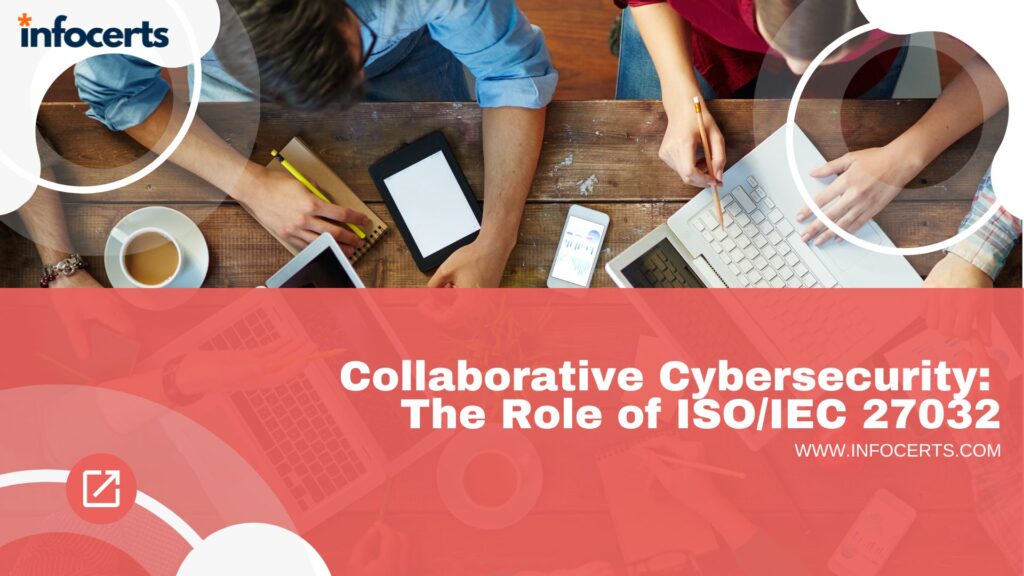Introduction
In today’s interconnected world, cybersecurity is not just an individual concern but a collective responsibility. The ISO/IEC 27032 standard provides a framework for cybersecurity collaboration among various stakeholders, ensuring a comprehensive approach to managing cyber threats. This blog post delves into the importance of collaboration in cybersecurity, the ISO/IEC 27032 approach, and a practical scenario showcasing these principles in action.
The Importance of Collaboration in Cybersecurity
Stakeholders Involved in Cybersecurity
Cybersecurity involves a myriad of stakeholders, including:
- Organizations: Companies of all sizes need robust cybersecurity measures.
- Government Agencies: Regulatory bodies that set and enforce cybersecurity standards.
- Cybersecurity Experts: Professionals who provide technical expertise.
- Customers: End-users who must be aware of security practices.
Benefits of Collaborative Efforts
Collaborative efforts in cybersecurity offer numerous benefits, such as:
- Enhanced Threat Detection: Sharing information about emerging threats improves detection and response times.
- Resource Optimization: Pooling resources leads to more efficient use of tools and expertise.
- Comprehensive Protection: A unified approach ensures that all aspects of cybersecurity are addressed.
ISO/IEC 27032’s Approach to Collaboration
Coordination Between Different Entities
ISO/IEC 27032 emphasizes the need for coordination among various entities. This includes:
- Joint Planning and Strategy Development: Creating common goals and strategies.
- Regular Communication: Maintaining open lines of communication for updates and alerts.
- Role Definition: Clearly defining the roles and responsibilities of each stakeholder.
Sharing Information and Best Practices
Effective collaboration under ISO/IEC 27032 involves sharing:
- Threat Intelligence: Information about new and evolving threats.
- Incident Reports: Documentation of cybersecurity incidents to learn from past experiences.
- Best Practices: Proven methods and techniques for enhancing security.
Scenario: A Financial Institution and Its Partners Combat Phishing Attacks
The Challenge: Phishing Attacks Targeting Customers
A large financial institution faced a surge in phishing attacks aimed at its customers. These attacks were sophisticated and difficult to detect, putting customer data and financial assets at risk.
Collaborative Measures: Working with Partners and Regulators
To combat these phishing attacks, the institution implemented several collaborative measures:
- Partnership with Cybersecurity Firms: Engaging experts to develop advanced detection tools.
- Collaboration with Regulators: Working with regulatory bodies to understand and comply with security standards.
- Customer Education Campaigns: Educating customers about recognizing and reporting phishing attempts.
Result: Reduced Phishing Incidents and Improved Customer Security
The collaborative efforts led to a significant reduction in phishing incidents. Customers reported fewer suspicious emails, and the institution saw an increase in customer trust and security.
For more detailed information on the collaborative strategies mentioned, you can explore our ISO 27032 course which aligns closely with the principles of ISMS and GRC. Our company offers comprehensive courses that equip IT professionals with the skills needed to enhance their cybersecurity posture. To enroll, contact us at INFOCERTS, +91 70455 40400.
Conclusion
Collaboration is a cornerstone of effective cybersecurity. The ISO/IEC 27032 standard provides a structured approach to fostering collaboration among various stakeholders. By sharing information and best practices, and coordinating efforts, organizations can significantly enhance their cybersecurity measures. Whether you’re part of a financial institution or any other sector, adopting collaborative strategies can lead to a more secure and resilient cyber environment.
Table: Key Elements of ISO/IEC 27032 Collaboration
| Element | Description |
|---|---|
| Stakeholder Coordination | Joint planning, regular communication, role definition |
| Information Sharing | Threat intelligence, incident reports, best practices |
| Collaborative Measures | Partnerships, regulatory collaboration, customer education |
Additional Resources
By leveraging the power of collaboration, as outlined in ISO/IEC 27032, organizations can build a robust defense against cyber threats. Enroll in our ISO 27032 course to learn more about implementing these strategies effectively. Contact INFOCERTS at +91 70455 40400 for enrollment details.

